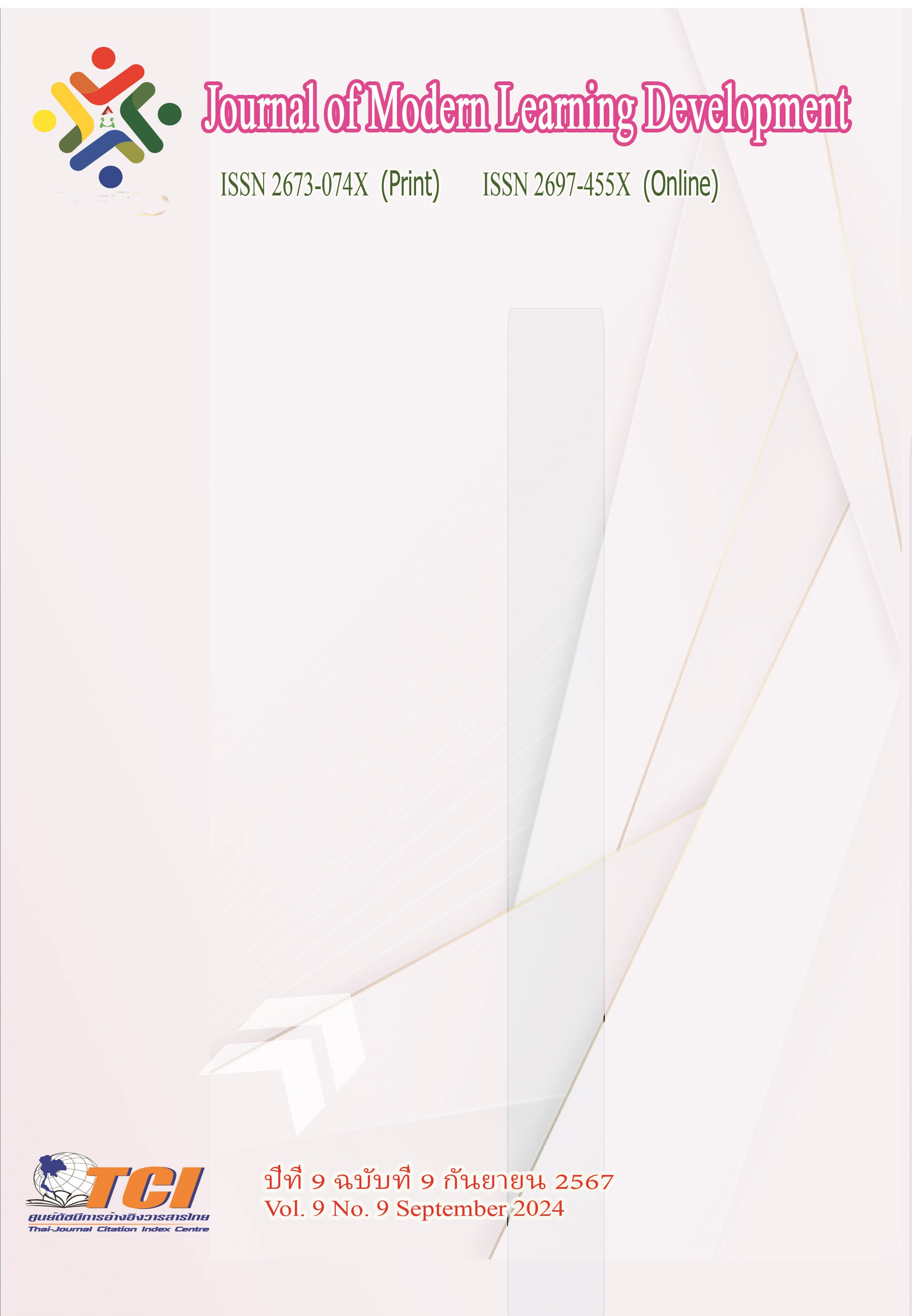Teachers’ Competency Model of Art Design Universities in Shenyang City Liaoning Province
Main Article Content
บทคัดย่อ
Background:As the nation increasingly values the management of art and design education in universities, research has helped to clarify and formulate propositions and suggestions for teacher competence in the field of art and design education, as well as the scope of capacity improvement and judgment in art and design education.
Aims:The objectives of this research were: (1) To examine the components of the teachers’ competency of art design universities in Shenyang city, Liaoning Province; (2) To develop the teachers’ competency model of art design universities in Shenyang city, Liaoning Province. (3) To propose guidelines for improving teachers’ competencies of art design universities in Shenyang city, Liaoning Province.
Methodology: The research was mixed methodology design which were comprised of quantitative and qualitative research. The population of this research were 1729 teachers in 16 art design universities located in Shenyang city, Liaoning Province. The sample were 459 teachers which was determined by G*Power program at power of test .80, and using proportional stratified random sampling. The statistics used for data analysis were descriptive statistics, Confirmatory Factor Analysis and Structural Equation Model Analysis (SEM).
Results:The research findings revealed that: (1) there were 5 components of teachers’ competency of art design universities located in Shenyang city, Liaoning Province: Professional knowledge capabilities, Skills operation capabilities, Professional innovation capabilities, Social practice capabilities, and Potential capabilities of individual variables; (2) the teachers’ competency model of art design universities fit well with empirical data (X²/df=1.738, GFI=0.959, AGFI=0.942, NFI=0.964, IFI=0.984, CFI=0.984, TLI=0.980, RMSEA=0.040).
Conclusion: There were 16 guidelines for improving teachers’ competencies of art design universities in Shenyang city, Liaoning Province: 1.Teachers had actively shared their teaching experiences and exchanged insights, continuously updating their knowledge systems.2. Emphasis had been placed on identifying potential shortcomings in teaching and self-assessment, continuously optimizing classroom teaching practices.3. New teaching methods and strategies had been tried in the classroom.4. Study history, find the cultural core more suitable for the national design from the historical evolution, so that the design can show more regional forms. 5. Establish mentorship programs where experienced teachers can guide less experienced colleagues. Encourage collaborative projects among students and faculty to foster a collaborative learning environment.6. Understand and incorporate diverse cultural perspectives into their teaching to prepare students for a globalized art world. Promote inclusive practices that respect and reflect the diversity of the student body and the art community.7. Teachers had aimed to enhance their information-based teaching abilities. 8. Create a constructive judgment environment to judge regular teaching and practical cross-disciplines, and provide and receive feedback on innovative ideas.9. The cultivation of innovative capabilities among young teachers had been of vital importance.10. The cultivation of teachers' innovative thinking, the creation of a positive campus atmosphere, and the enhancement of comprehensive quality and professional level had been emphasized. 11. Teachers had developed personal plans to improve their practical teaching abilities and cultivate a mindset of lifelong learning.12. Schools had optimized the mechanism for school-enterprise cooperation, leveraging the strengths of both entities for effective collaboration.13. Include diverse cultural perspectives in the curriculum and encourage students to consider these in their design work. Study and address global design issues, such as poverty, health, and education, from a design perspective. 14. By reflecting on teaching before, during, and after class, teachers were better able to identify issues in their teaching and seek solutions, thereby improving their individual teaching abilities.15. Teacher participation in educational action research had been an effective way to enhance individual teaching and research capabilities.16. Teachers had combined their knowledge with teaching practice to continuously improve their personal abilities.
Article Details
เอกสารอ้างอิง
Dervenis, C., Fitsilis, P., & Iatrellis, O. (2023). A review of research on teacher competencies in higher education. Quality Assurance in Education. 2022-01-18
Chen, X., & Zhang, X. (2018). A Study on the Five-Dimensional Model of University Faculty Competence. Educational Theory and Practice, (7), 48-52.
Chen, Z., Yang, H., & He, M. (2022). Model Construction of College Teacher Competency in the New Era. Journal of Shaoguan University·Education Science, 43 (3), 49-52.
Du, Y., & Shi, J. (2019). A study on the influence of practical teaching in applied colleges on the cultivation of students' professional ability. Tsinghua University Institute of Education. 2019,86-90
Li, B., Qu, M., & Zhou, B. (2024).Research on the Construction and Application of Teachers’ Innovativeness Indicator System in the Context of Technology Empowerment. Teacher Education Research. No.212 (02), 1-8.
Li, Y. (2019). Exploration on the Docking Mode between Laboratory Teaching and Skill Contests for Adult Students. University Chemistry. 2019, 32-35
Li, D., & Liu, C. (2017). An Interview Study on the Competence of University Faculty. Educational Science Research, (4), 73-78.
Liu, T., & Wang, F. (2018). A Study on the Impact of Organizational Factors on the Competence of University Faculty. Educational Research and Experiment, (6), 47-51.
Wang, L., & Liu, H. (2016). Construction and Empirical Study of the Competence Model for University Faculty. Higher Education Research, (2), 55-60.
Wang, M. (2019). Exploring Mr. Wang Mingzhi's view on design education that integrates art and science——A series of studies on pioneers of Chinese design education. Furniture and interior decoration. Issue 4, 2019
Wang, H., & Sun, J. (2022). Research Status and Prospect of Evaluation on Postgraduate Innovation Ability in China. Journal of Graduate Education. 2022, 163-170
Wu, X., & Yang, L. (2019). An Empirical Study on the Competence of University Faculty. Education and Economy, (3), 68-72.
Yang, D. (2024). In the era of artificial intelligence, how design education changes with the times. Guangming Daily
Zhang, H., & Li, M. (2014). A Review of the Research on the Competence of University Faculty. Educational Research, (5), 88-92.
Zhao, M., & Zhang, W. (2015). A Study on the Influencing Factors of University Faculty Competence. Educational Development Research, (8), 57-61.
Zhu, Y. (2021). A Study on the Development Level and Influencing Factors of Scholarship of Teaching Ability in Higher Education. Shanghai Journal of Educational Evaluation. 2021,16-20


